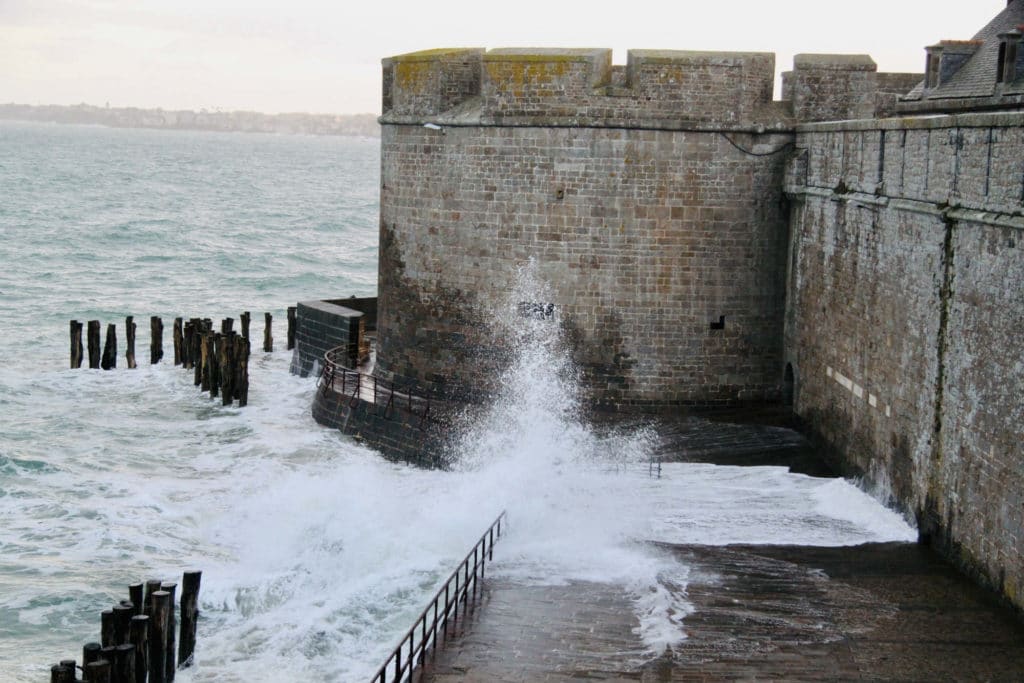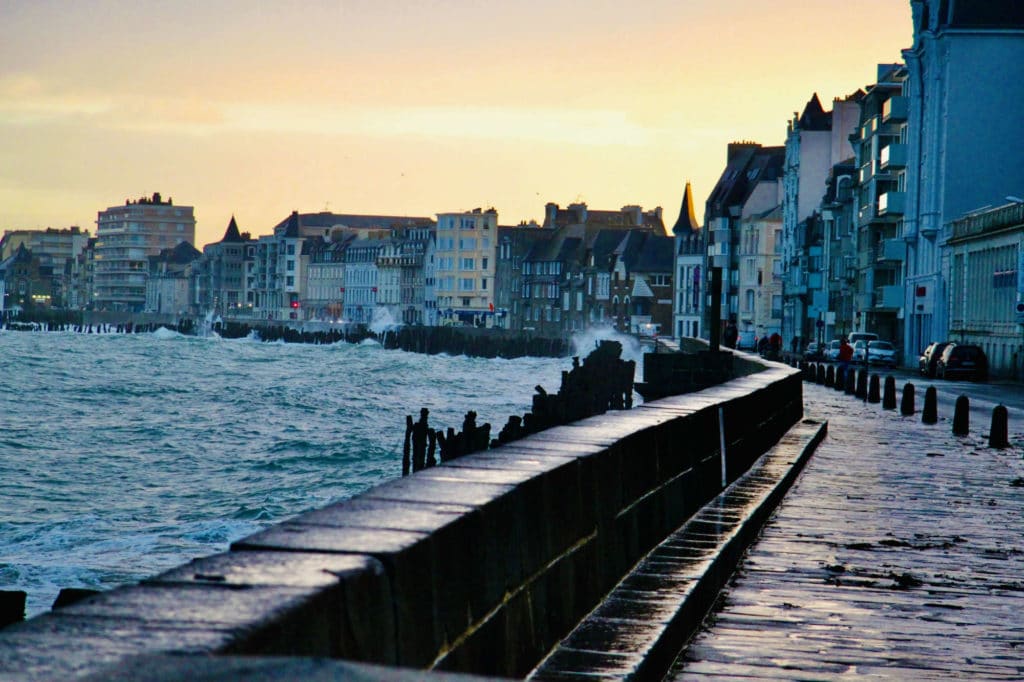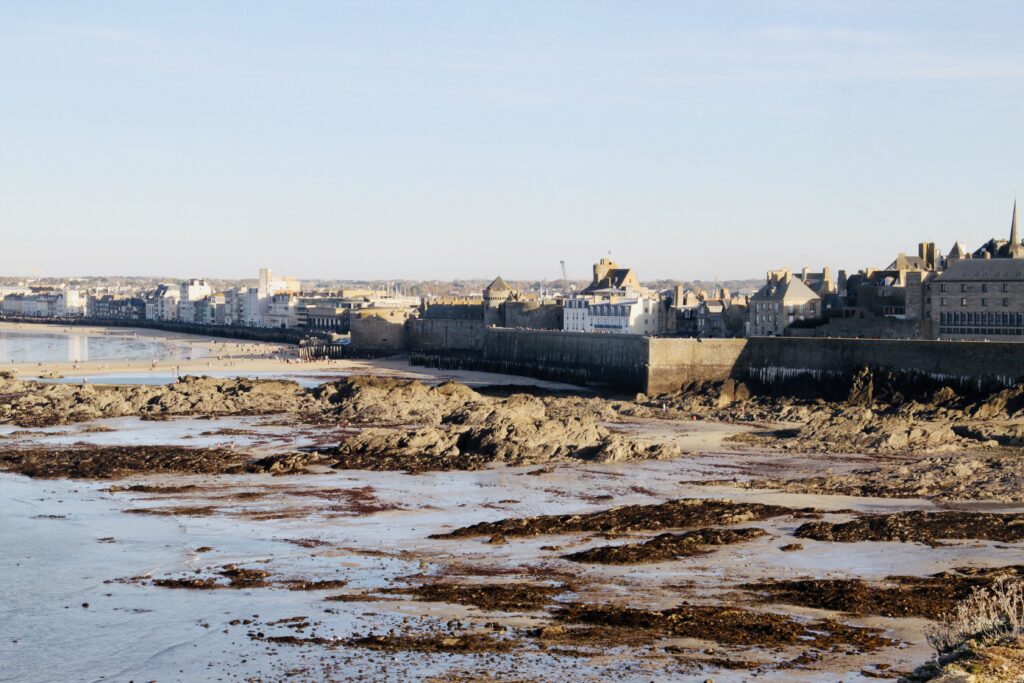The high tides in Saint-Malo are a show not to be missed. The bay of Saint-Malo and the bay of Mt St Michel are the scene of the highest tides in Europe! In connection with the lunar cycles, the sea takes 6 hours to rise, remains about twenty minutes, then takes 6 hours to come down, and so on…
But why is this phenomenon so significant in Saint-Malo? How can we make the most of it? And what are the schedules of the year’s high tides?
The tidal phenomenon in Saint-Malo is much talked about. But what is it really? A tide is the movement of the sea level up and down caused by the Moon’s attraction. Twice a day, about every 6 hours, the sea rises or falls, delighting spectators.

The amplitude of the tide can vary depending on the positioning of the Moon and the Sun in relation to the Earth. When the three celestial bodies align along the same axis, the tides are higher. This is called a high tide, occurring at each new and full moon.
To evaluate the height of a tide, it is assigned a coefficient between 20 and 120. From 90 onwards, we speak of high tides, when the show becomes truly impressive!
In Saint-Malo, the tidal range—the difference between the water level at low tide and high tide—averages 12 meters and can reach 14 meters during the highest tides.
In comparison, the highest tides on land occur in Canada’s Bay of Fundy and can reach up to 16 meters.
Twice a year, the Equinox Tides attract crowds to Saint-Malo. In March and September, the tides are particularly high, with coefficients approaching 120! If there’s a gust of wind, the spectacle becomes breathtaking.
During one of the strongest “Tides of the Century” decades ago, airplane wrecks appeared, visible to the naked eye.
In March 2015, the city experienced the “Tide of the Century” with a coefficient of 119. Contrary to what one might think, this tide does not occur once every century but every 18 years when the Earth, Moon, and Sun align perfectly.
During high tides in Saint-Malo, particularly the highest ones, beaches often disappear completely under the water. On windy days, waves may crash over the dike, creating dramatic scenes.

The high tide also transforms landscapes, such as the National Fort or Grand Bé, into isolated islands surrounded by water.
At low tide, beaches expand significantly, making it ideal for long walks. However, swimmers will need to venture further to reach the water.

Low tide is also a paradise for fishermen on foot, who collect clams, oysters, and other shellfish. If you try this activity, be sure to follow local guidelines to protect the environment.
January
February
March
April
May
June
July
August
September
October
November
December